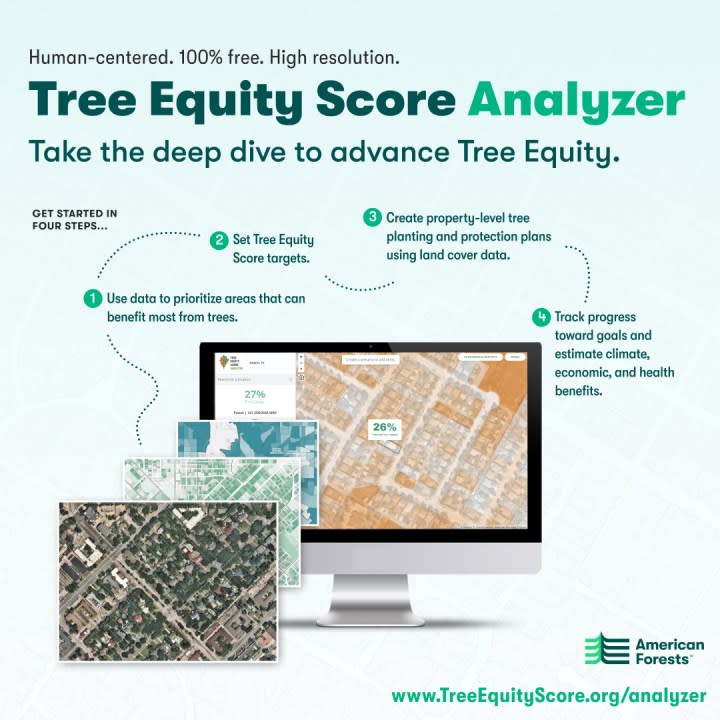Austin has gaps in its ‘tree equity,’ nonprofit says
AUSTIN (KXAN) — Trees have many benefits for a community, from cooling the city to cleaning out air pollution. But the distribution of trees is not the same across Austin, with richer neighborhoods having more trees than poorer ones, according to the oldest conservation group in the U.S.

Nonprofit group American Forests recently launched a mapping tool that allows users to see the “tree equity” — or the fair distribution of trees in their community. The online application is free to use, but does require users make an account to access it.
According to data shared by American Forests, Austin neighborhoods with the most people living in poverty had 39% less trees than the areas with the fewest. This also matched the difference in tree cover between neighborhoods with the most people of color and those with the fewest.
Alexis Gomez, American Forests Senior Manager of Community Engagement, said that the app is part of a larger move by the nonprofit to expand U.S. tree cover.
“We need to address the inequitable distribution of trees that we see today, which is rooted in the history of discriminatory policies and marginalization in communities across the U.S.,” Gomez said. “We’re really excited to bring powerful tools like the tree equity score analyzer to Austin and continue to expand the the tree equity movement that American Forests is building.”
Bridging the divide would require planting nearly 7.5 square miles of trees, according to American Forests. The group said that this would be roughly 349,000 trees.
“The tree equity score is a prioritization tool. Any neighborhood that has not reached a score of 100 has room for improvement,” Gomez said. “It helps to characterize who we’re seeing is impacted and who are receiving the most benefits of trees.”
In an August 2023 interview with KXAN, local group TreeFolks talked about their efforts to expand the city’s coverage.
2023: How cool are trees? Austin tree canopy is growing
“They’ll all contribute by removing carbon dioxide from the air, reducing greenhouse gasses, mitigating climate change, improving the air quality, providing habitat for wildlife, providing shade, making the city more beautiful and more pleasant to be in,” said Gillian Holder, a TreeFolks volunteer coordinator in 2023.
According to American Forests, an expanded canopy could offset 3,000 homes’ worth of electric consumption and remove thousands of tons of carbon and air pollutants.
For the latest news, weather, sports, and streaming video, head to KXAN Austin.
